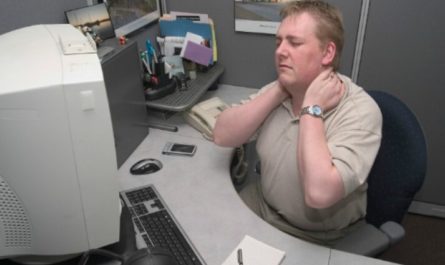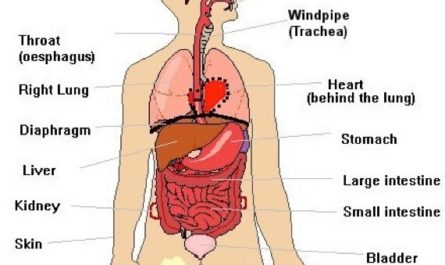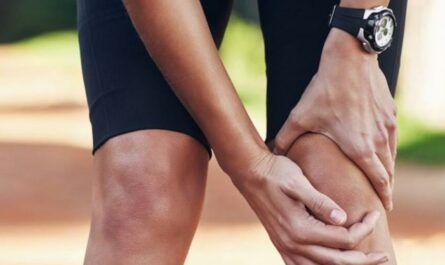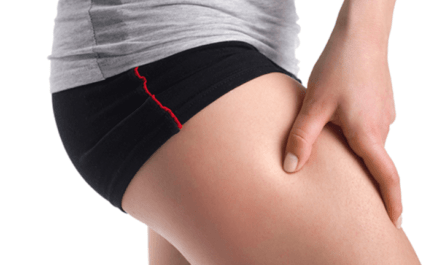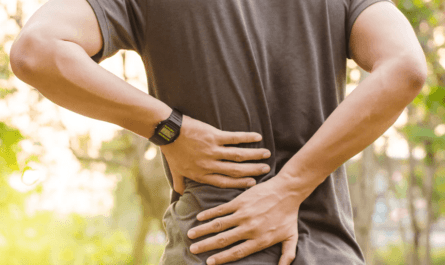Whether you are a teen that plays a sport or a person in old age, we all encounter knee pain in the left or right side. Knee pain can occur after an injury, usually due to a torn cartilage or a ruptured ligament. Many medical illnesses like rheumatoid arthritis, gout, or osteoarthritis can also cause knee pain. In addition, vitamin deficiency can also cause knee pains. This is why your parents or grandparents keep telling you to eat fruits and vegetables!
Let’s talk in detail about some of the causes of knee pain and the treatments to rectify the pain. Thus, if your knee is hindering you from going around your daily tasks, this article will prove to be fruitful for you!
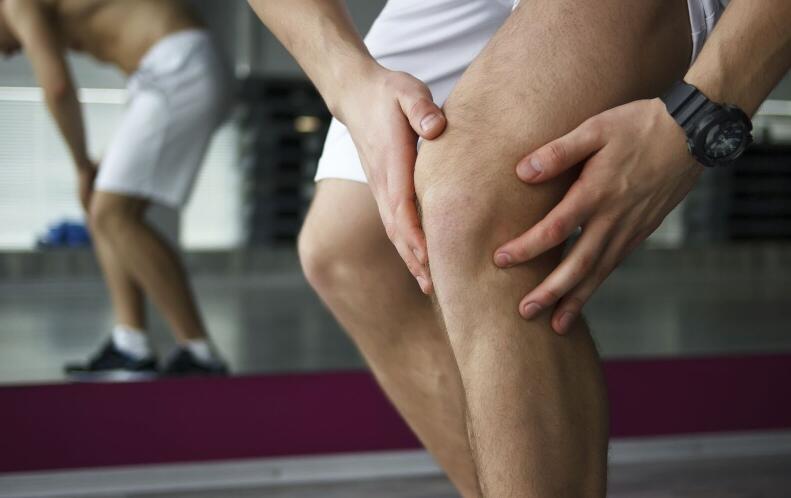
Causes of Knee Pain on the Left or Right Side
Let’s divide the causes into three major categories -Mechanical Problems, Injuries, and Arthritis.
1. Mechanical Problems
We characterize Mechanical problems by referring to the pain caused by the immense stress and strain of different body muscles. Mainly, this pain, known as mechanical pain, is caused by bad habits. Poor posture while standing and sitting, lifting heavy weights, or a strenuous amount of weight during leg workouts can cause mechanical pain.
Loose bone or cartilage
What does this even mean? Hold on; we will explain. Sometimes due to a particular injury to the knee or due to the degenerations of cartilage or bone, a small piece of your cartilage or bone might get ‘loose’ and break off from its masses.
These tiny pieces float into the space of the knee joint. This might not necessarily cause problems unless it interferes with the movement of the joint. If it does, it will cause pain as torturous as a finger between the door hinges.
Dislocated Knee Cap
Patella is a bone in the shape of a triangle in front of your knee. When this triangular piece of bone slips out of its place, it can cause intense pain. The patella usually slips outside of the knee, and this causes a knee dislocation that hurts just as much, if not more, as a shoulder dislocation.
Hip or Foot Pain
Bad posture can cause hip and foot pain, which causes knee pain. A poor posture adds additional stress and strain on your knee and ankle joints which hurts the knees and ankles.
2. Injuries
Injuries, particularly your legs, can affect the tendons, ligaments, and the fluid-filled sacs called Bursae that reside around your knee joint. It also affects the cartilage, bones, and ligaments that are present at the joint. The following are some of the most common types of knee injuries that can incur pain.
Fractures
After any collision or fall, the bones of your knee can break depending on the collision’s severity. This is called a fracture. Fractures can also occur in individuals who suffer from a calcium deficiency and have osteoporosis. These people might get a knee if they step wrong.
ACL Injury
A tear in one of the four ligaments which connect your shinbone to your thighbone can cause severe pain to itching up your leg. This particular ligament is known as the Anterior Cruciate Ligament (ACL) hence the name ACL injury.
People who play sports like basketball, football, or basketball are more susceptible to an ACL injury because these sports require sudden changes in direction. Thus, any instant change in the direction of your footing can stretch the ligament beyond its limit, and you might feel excruciating pain in your knee.
Knee Bursitis
Bursae, fluid-filled sacs around your knee joint, can sometimes become inflamed after an injury to the knee. The Bursae cushion the exterior of the knee joint so that different ligaments and tendons can easily glide over the joint without any unnecessary friction. The inflammation of the Bursae causes increased friction and pain in the knee.
Patellar Tendinitis
Patellar Tendinitis is the inflammation and irritation of the several tendons that connect the bones around your knee to the muscles. This type of injury is of the Patella, a triangular bone outside your knee. The tendon of the Patella connects the ‘Quadriceps Muscles’ at the front of the thigh to the shinbone. Sportspersons like runners, cyclists, and skiers are more susceptible to Patellar Tendinitis.
Torn Meniscus
A meniscus is a rubbery, sturdy, tough cartilage that acts as a shock absorber between your thighbone and shinbone. It ruptures if you twist your knee or ankle while handling heavy-weight objects.
3. Arthritis
There are more than 100 types of arthritis, each unique. Some of the types adversely affect the knee. These are as follows:
Rheumatoid Arthritis
Rheumatoid Arthritis is the type of arthritis that can affect any joint in your body. It is an autoimmune disease that swells and hurts many smaller joints of your body, including the knee joint. It is a chronic condition when your immune system stops working, which protects you against different microbes. Its severity varies.
Osteoarthritis
Osteoarthritis is, also known as degenerative arthritis, one of the most common types of arthritis that affects women and men equally. Osteoarthritis occurs when the protective cartilage surrounding the bones is torn or ruptured. Though this wear-and-tear condition affects every type of joint in the body, it usually affects the joints of the knees, ankles, and hands.
Septic Arthritis
Septic arthritis is also called infectious arthritis. When a joint gets infected with an infectious agent, it results in the inflammation of that joint. This type of inflammation is known as Septic Arthritis.
If your knee is swollen, red, or causing a lot of pain, you need to run to the nearest Hospital emergency room since it can cause exponential damage to the knee cartilage. Thus, it is essential that before the infection gets worse, you get it checked by the doctor.
Gout
When uric acid crystals accumulate in a specific joint, it causes pain, swelling, and redness in that part of the body. Though it is mainly seen in the toes, it frequently occurs in knee joints.
Pseudogout
Certain calcium-containing crystals get concentrated in the joint fluid. The combined might get stiff, red in color, and tender when this occurs. One of the most common causes of knee pain is pseudogout.
4. Syndromes
Some syndromes cause knee pain which is explained below:
Patellofemoral Pain Syndrome
Patellofemoral Pain Syndrome is described as the pain that arises from your patella (kneecap) and femur, which is the underlying thighbone. It is most common in young adults, especially athletes, due to misalignment of the knee cap. It also occurs in older adults, usually as a result of arthritis.
Iliotibial Band Syndrome
The Iliotibial band, also called the Maissiat’s band and much easier than the IT band, is a fiber, a tough band of tissue, which originates outside your hip and ends outside your knee.
This band helps your hip to rotate and function properly. When the IT band gets rigid and tight, it starts to rub on the outside of your knee bone, the femur. The friction of the rubbing when you move causes knee pain. Most cyclists and runners experience this type of pain.
Factors That Increase the Chance of Knee Pain on the Left or Right Side
Numerous risk factors can increase knee complications. Thus, it is better to keep these factors in mind and continually work to become healthy. We have singled out the most prevalent factors in knee pain patients.
1. Over weight
When a person is obese or overweight, the stress and strain on the hips, knees, and ankles increases. They might feel exhausted after a short exercise duration, even when only walking. The increased weight on the weight-bearing joints and bones, like the knees and ankles, might break down the joint cartilage and lead to osteoarthritis.
2. Lack of Agility
Agility is the ability to move quickly and smoothly. If your muscles lose their flexibility and strength over the years or are significant trauma to a particular part of your body.
The lack of flexibility can increase the friction between the muscles and the joints, which might increase the chances of a knee injury that further incurs severe knee pain. Strong muscles and bones help stabilize your body and protect it against blunt trauma.
3. Previous Injuries
If you sustain an injury due to some mishap in the past, it is most likely that the knee might hurt and that you might face another injury. Thus, getting your knee checked after it has experienced a hard blow is dire.
4. Intense Activities
Sports and jobs requiring acute stress on your body can become a risk factor for knee complications. Sports like basketball, football, and skiing stress your knee, hip, and ankle joints which can cause the ligaments, cartilage, tendon, and even the joint to snap or lose their flexibility.
Furthermore, jobs in construction or other intensive industries can put a load amount of stress and strain on your bones and joints due to picking up heavy objects or working for long hours.
Treatments For Knee Pain on the Left or Right Side
We will not leave you feeling panicked and scared after reading about knee pain’s numerous causes and risk factors. You do not have to run to another site to check out the treatments you can get to combat any knee complication that you might have.
We have enlisted some of the best treatments in all healthcare centers worldwide to help you alleviate knee pain. Though, you need to remember that the cure for each type of knee pain is different, so you need to go to the doctor and consult before implying one of these treatments in your daily life.
To get information about some treatments available worldwide to eradicate or at least minimize knee pain, continue reading this article!
1. Medications
For unthreatening knee pains that can cause exhaustion or have another mundane reason, the doctor might prescribe you one or more medications you must take for the specified time. Drugs are also given in case of arthritis.
2. Therapy
If the medications alone do not suffice or you have a severe injury to the knee, the doctor might suggest sessions with a physical therapist. The therapist will help you gain back mobility in your legs which will help to lessen the pain. Usually, a physical therapist assigns you several exercises under his surveillance to help you strengthen your muscles.
You might think that since you work out and carry out several physical activities, you might now need physical therapy. WRONG!
The physical therapist will help you correct your knee alignments and allot particular exercises that might improve your movement patterns. The therapist might even suggest a few good techniques you can practice in whichever sports you play to protect against any injury.
For patients who suffer from osteoarthritis or gout, a therapist provides you with arch support which will help you stabilize yourself and shift the pressure from the knee that might cause pain. Moreover, braces help protect your knee joint and keep it from harm’s way while supporting it.
3. Surgery
Sometimes when the injury is too severe and the pain is too intense, the doctor suggests surgery. Though some surgeries are necessary, others might not be.
In these cases, consider the different advantages and disadvantages you might face if you do get surgery. Some surgeries for various knee complications include Partial or Total Knee Replacement Surgery or Arthroscopic Surgery (to repair the damaged joint).
4. Injections
Sometimes, the doctor suggests certain injections to help lessen the pain. The medication is released right into the joint to cause instant relief. Some injections given for knee pain are Hyaluronic Acid, Corticosteroids, and Platelet-rich plasma.
It is not wise to get the injections yourself and self-medicate. You should go to a doctor and let them decide the course of treatment you need.
Preventions For Knee Pain on the Left or Right Side
There are a few ways you can ensure that you do not encounter knee pain or minimize any pain you are suffering from.
- Follow a normal and healthy diet to keep the extra pounds off.
- Play sports with the right equipment to minimize excessive stress on the knees.
- Exercise frequently so your muscles remain strong and flexible.
- Be careful while picking up heavy objects.
- Please consult a doctor as soon as your knees start to pain.
- Take part in sports like swimming to minimize pain caused by chronic diseases.
Conclusion
Knee pain can hinder your daily life activities. It is caused due to several causes like ACL injuries, excessive weight on weight-bearing joints, arthritis, or misalignments of the foot. Though, do not worry; various treatments are available to lessen the pain due to advancements in science and technology.

